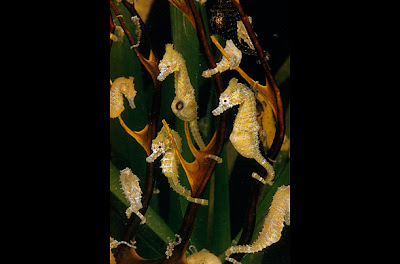
by Mat Thomas - www.animalrighter.org
For decades, the thoroughbred racehorse industry has practiced a shockingly cruel breeding method that activists have only recently brought to light. The result of this compulsory procreative procedure are nurse mare foals — the unwanted offspring of female horses used as nursing surrogates for thoroughbred ponies. Every year, tens of thousands of these horses are killed or orphaned simply because they are useless to a multi-million dollar enterprise that thrives on equine exploitation.
Here's how it works: in order to get thoroughbred mares to produce as many potential racehorse champions as possible, breeders push their biological limits to extremes by forcing them to reproduce once a year. Maximizing productivity requires breeders to have the mares reimpregnated right after giving birth, which precludes them from nursing their own babies. The newborns are therefore taken away from their mothers within days of delivery, and nursed by surrogate mares (of “inferior” breeds) who have just given birth to their own offspring — the “by-products” of this process are known as nurse mare foals.
Permanently separating thoroughbred babies from their mothers is tragic enough, but nurse mare foals usually face a far worse fate. While some are killed soon after being born or starved to death, others are sold (as young as one day old) to the tanning industry which slaughters them and turns their skin into handbags, belts, and other high-grade leather products.
The lucky ones are rescued by horse advocacy groups, which, just like the tanners, must pay the going rate of $250 to $350 apiece — and then spend several hundred more dollars feeding and raising each horse until they are ready for adoption.
Rescuers nourish nurse mare foals by bottle-feeding them milk replacer, which could theoretically be used to feed thoroughbred foals as well, thus eliminating this exceedingly inhumane breeding practice altogether.
There are two main reasons that they don't do this: formula is expensive, and horse breeders maintain that thoroughbreds need to drink real (albeit surrogate) mother's milk from the source to achieve peak performance. Plus, the larger nurse mare farms (concentrated in New York, Kentucky and Tennesee) produce 50 to 100 foals a year, and it is more operationally efficient to make the surrogate mothers do all the work rather than paying human caretakers to feed the foals by hand.
Another possible solution to producing unwanted foals is a new domperidone-based drug protocol that induces non-pregnant mares who have given birth before to lactate. Though chemically manipulating horses' hormones poses ethical dilemmas, in practical terms it would prevent tens of thousands of unwanted foals from being born into a life of suffering and untimely death. It could also dramatically reduce the number of surrogate nurse mares by enabling thoroughbreds who are too old for breeding to nurse foals.
There are many ways to help relieve the suffering of nurse mares and their orphaned foals, from urging elected legislators to pass humane laws to financially supporting horse advocacy organizations or adopting a rescued foal. Learn more about how to take action by visiting lastchancecorral.org




























